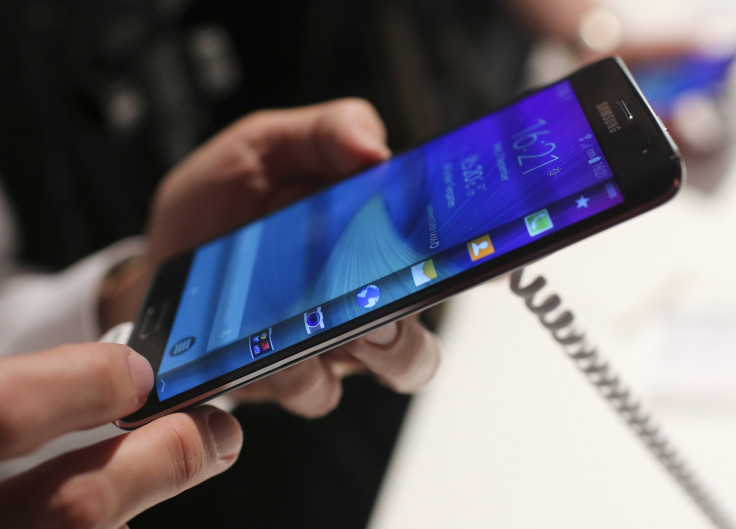Galaxy Note 4 vs Galaxy S5: The 'Phablet' Is Now Looking Like Samsung's Flagship Smartphone

For years, Samsung Electronics Co.'s flagship and best-selling phone has been the "S" series represented since the spring by the latest model, the Galaxy S5. But now, Samsung (KRX: 005930) has unveiled two new versions of its big-screen "Note," the Note 4 and the "Edge," with a screen that bends over the side of the phone.
The Galaxy "S" series is usually first with the newest features, but the Galaxy S5 isn't expected to get an update until 2015. So, is the "Note" line Samsung's new flagship phone? And if so, could it overtake the Galaxy S line in sales?
“Samsung generally has more than one device targeting similar segments,” Carolina Milanesi, chief of research and head of U.S. business at Kantar World Panel said.
Despite many similarities between the Galaxy Note line and the Galaxy S line, the devices have defining features. The Galaxy Note targets the “phablet” sector of the mobile market, smartphones that have displays bigger than 5 inches diagonal. Note devices also stand out because of their use of the S-Pen Stylus. The Galaxy S line, while still large-screened in comparison to many devices like most iPhones, is much smaller than Note line.
The Galaxy S-line usually gets Samsung's latest features, such as the fingerprint scanner feature that appeared on the Galaxy S5 when it launched in April. But it has also been met with heavy criticism from consumers and critics, who complained the device’s display and processor speed remained largely unimproved. Ongoing issues with the Galaxy S line include insufficient storage and Samsung’s insistence on sticking with the plastic for its exterior design.
Enter the Galaxy Note 4. Not only does the device include the hardware upgrades that consumers desired in the Galaxy S5, but it also includes those increased storage capacities and a new design that includes metal.
“The initial volumes of the Note helps to test features and ramp up the volume more slowly and then [Samsung] gets ready to move into the [S] portfolio,” Milanesi said. Features appearing on the Galaxy Note 4 now may show up on the Galaxy S flagship in 2015. But in the current year, the Galaxy Note 4 is looking like a far superior device to the Galaxy S5.
When the Galaxy Note line was first introduced in 2011, it was not received well. But it has rebounded massively since then. The line has grown from the original Galaxy Note selling 5 million units in four months to the Galaxy Note 3 selling 5 million units in just one month and 10 million in two months.
Samsung is expecting its new Galaxy Note 4 smartphone to sell extremely well when it releases in October. The Galaxy Note line has steadily been catching up to Samsung’s other flagship, the Galaxy S line in terms of sales. Several models in the S line have surpassed 10 million unit sales in less than one month.
The phablet wars are expected to heat up as Apple Inc. (NASDAQ:AAPL) prepares to launch its first phablet, the iPhone 6L. Samsung has responded by ramping up the power and design on its Galaxy Note 4. While aiming to beat Apple, Samsung may have inadvertently beaten out itself, in terms of desirability at least.
“The Note is more expensive, and I would guess most consumers decide between them simply based on display size and price,” Canalys analyst Daniel Mattie said.
With their size and improved features, Galaxy Note devices are usually in upwards of $700 while Galaxy S devices are usually around $600. In a way, Samsung has poised the Galaxy Note line as more exclusive than the S line. It is a niche, not everybody likes a super-large screen. But Note users also get to enjoy many features not found on other Galaxy devices.
“I think it’s more a case of having positioned the Note family as a differentiated offering from anything else competitors were bringing to market,” Milanesi said. “As others move into the Phablet space Samsung needs to continue to differentiate.”
There is one thing that would stop the Galaxy Note line from swallowing up the Galaxy S line: the fact that Samsung likely won’t let it. The Galaxy S line typically sells more because Samsung ships more units of those devices. Though the Galaxy Note line is increasing in popularity, there will likely never be as many Note devices on the market as there are S devices.
“I don’t think Samsung should worry about one of its products cannibalizing another, and they likely do not. One device may have higher margins, but either way Samsung is earning a sale,” Mattie said.
© Copyright IBTimes 2025. All rights reserved.




















